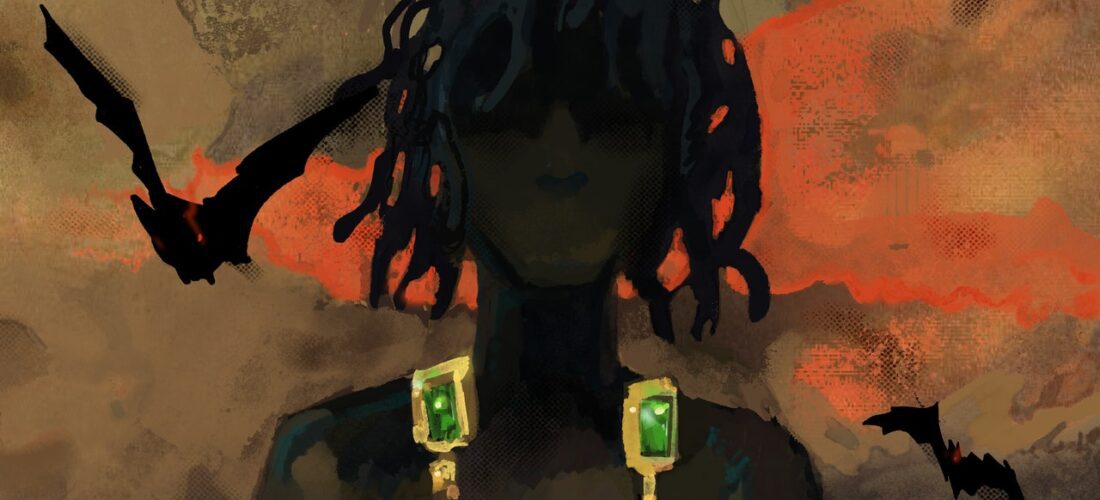At the O2 Arena in London last November, Nigerian Afrobeats star Rema came onstage riding a glowing red-and-black horse and wearing a mask inspired by Queen Idia, a cultural icon dating to the 16th-century Kingdom of Benin. The musician hoped it would be a devastating statement on the UK’s continued hoarding of African art, including famous sculptures of Idia. Elsewhere in the show, he performed atop a giant bat, referencing a familiar sight in the skies over Benin City. But the theatrical tribute to Rema’s hometown and his people’s history was met with reactions ranging from confusion to conspiracy theories questioning whether he was part of the Illuminati.
The colossal international success of Rema’s 2022 single “Calm Down” accelerated the rise of a feather-ruffling new voice in Afrobeats, one keenly aware of his potential to ascend to the level of the genre’s big three—Burna Boy, Davido, and Wizkid. That fateful show in London spurred the creation of Rema’s second album, HEIS, a record that kicks back with spring-loaded rhythms and gleeful provocations and brings the defining elements of his city front and center.
Up until now, Rema was often spotted with a cuddly human-size teddy bear. On HEIS, the 24-year-old artist adopts a roguish anti-hero character, represented by a bat, who flexes with the grandiosity of a U.S. rapper: Rema as both Bruce Wayne and Batman. Alexander Wang, icy wrists, and Richard Mille all wrap around the beat of the wordy yet contagious “Yayo”; on the chorus of “Hehehe,” he unleashes a cartoonishly sardonic laugh. He’s in Venice sipping Henny on the Miami bass-inspired “Azaman,” which sounds like he’s winking at you from what could be the top deck of a yacht.
Rema hadn’t touched base in Benin City since 2018, having moved to Lagos before launching his career with breakout first single “Dumebi.” HEIS reconnects with his home city’s energy: Percussion moves in unbreakable clusters, dusty guitars are swapped for laser-gun synth, and strings outline the album in an ornate gold frame. “Black Bentayga, smoking a reefer,” Rema begins the title track, with Arabic strings rising around him as though Amaarae’s Fountain Baby is filling the Bentley’s speakers.
At just 28 minutes, HEIS moves with ceaseless hustle. Where Rave & Roses opened with a cauldron of sentimental chords and guitar, HEIS begins with four blunt bars of 16-bit synth stabs before springing into uninterrupted action. “Follow me run, you tear your ACL,” he raps on “Azaman.” Far from the chiseled stylings of Asake and Wizkid, Rema opts for an antsy stream of consciousness with the momentum of a Ferrari. Just as the pace threatens to slow, “Ozeba” stages a blind date between snapping kuduro and the sort of deep-voiced vocal inflection Playboi Carti has toyed with recently. The chemistry is immediate.
The final moments of HEIS tease a full-on heel turn. The penultimate “Villain” samples the featherweight piano of Lana Del Rey’s “A&W”—itself a song that cycles through characters and states of moral alignment—and turns it into a sinful amapiano body-winder. “Please don’t be mad at the fact that your baby na my baby don’t take it personally,” Rema sings through a Cheshire cat grin. “Now I Know” snaps out of this fantasy to touch on raw wounds. “All of my childhood I lost ’cause I wan feed family,” he cries, thinking of the struggle of caring for his loved ones after the death of his older brother at 15. It’s a moment of revelation from an album of blood-pumping madness. In going back home, Rema recasts an act of defiance as a thrilling character arc and a snapshot of his home city. It’s as exhilarating as a street race, as gothic as the bats flying above him.
